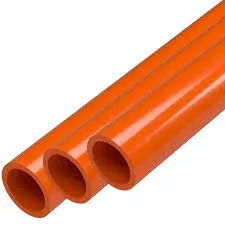Nov . 21, 2024 14:28 Back to list
ppr pipe for hot water manufacturer
The Role of PPR Pipe for Hot Water A Comprehensive Overview for Manufacturers
Polypropylene Random Copolymer (PPR) pipes have become increasingly popular in the plumbing industry, especially for hot water applications. Manufacturers of PPR pipes are witnessing a growing demand due to their numerous advantages, making them a preferred choice over traditional materials like copper and PVC. In this article, we will explore the benefits of PPR pipes, the manufacturing process, and why they are suited for hot water systems.
Advantages of PPR Pipes
1. Thermal Resistance One of the primary features of PPR pipes is their ability to withstand high temperatures without deforming or losing structural integrity. They can typically handle temperatures up to 95°C (203°F), which makes them ideal for hot water supply systems.
2. Corrosion Resistance Unlike metal pipes, PPR pipes are resistant to corrosion and scaling. This feature ensures a longer lifespan, as they do not rust or degrade over time, reducing maintenance costs and system failures associated with corrosion.
3. Low Thermal Conductivity PPR pipes have lower thermal conductivity compared to metal pipes, which means they do not lose heat easily. This property enhances energy efficiency by maintaining the temperature of hot water over longer distances.
4. Lightweight and Flexible PPR pipes are lightweight, making them easier to handle and install. Their flexibility allows for easier adjustments during installation, minimizing the risk of breakage.
5. Non-Toxic PPR is a non-toxic material, making it safe for transporting drinking water as well as hot water. It does not leach harmful substances, ensuring that the water supply remains pure and safe.
6. Cost-Effectiveness Although the initial investment in PPR pipes may be higher than traditional materials, their durability, low maintenance costs, and longevity result in overall savings over time.
Manufacturing Process of PPR Pipes
The manufacturing of PPR pipes involves several key steps
1. Material Preparation The raw material for PPR pipes is polypropylene random copolymer. This resin is usually delivered in pellet form and is prepared for extrusion.
ppr pipe for hot water manufacturer

2. Extrusion The prepared polypropylene is fed into an extruder, where it is melted and forced through a die to form a continuous pipe. The extrusion process is crucial as it defines the diameter and wall thickness of the pipe.
3. Cooling As the extruded pipe exits the die, it is cooled in a water bath to solidify its structure. Proper cooling is essential to maintain dimensional accuracy and enhance the pipe's mechanical properties.
4. Cutting and Finishing Once cooled, the pipe is cut to specified lengths. Further finishing processes may include surface treatments or the application of protective coatings.
5. Quality Control Manufacturers conduct rigorous quality control checks, including pressure tests and inspections for deformities, to ensure that the pipes meet industry standards.
Applications of PPR Pipes in Hot Water Systems
PPR pipes are widely used in residential and commercial hot water systems. They are suitable for
- Hot Water Distribution Systems Ideal for supplying hot water to bathrooms, kitchens, and heating systems due to their thermal resistance and durability.
- Underfloor Heating PPR pipes are an excellent choice for underfloor heating applications, as they provide efficient heat transfer while minimizing energy loss.
- Solar Heating Systems With their ability to withstand high temperatures, PPR pipes are also used in solar water heating systems, contributing to energy-efficient heating solutions.
Conclusion
As the demand for reliable and efficient hot water systems grows, manufacturers should consider the benefits of PPR pipes. Their thermal resistance, long lifespan, and cost-effectiveness make them an optimal choice for various applications. By investing in PPR pipe technology, manufacturers can not only meet market demands but also contribute to sustainable and energy-efficient plumbing solutions. Emphasizing these advantages in marketing strategies can further enhance the appeal of PPR pipes in the competitive marketplace.
-
DN100 PVC Pipes for Well Casings | Durable & Corrosion-Proof
NewsAug.07,2025
-
Durable DN500 HDPE Double Wall Corrugated Drain Pipes
NewsAug.06,2025
-
32mm HDPE Pipes Coil: Durable & Flexible Water Supply
NewsAug.05,2025
-
DN100 PVC Well Casing Pipes | Durable Corrosion-Proof
NewsAug.04,2025
-
HORON 25mm PPR Plumbing Pipes - AI-Enhanced & Reliable
NewsAug.03,2025
-
HORON 25mm PPR Pipes - AI-Optimized Plumbing Excellence
NewsAug.02,2025

